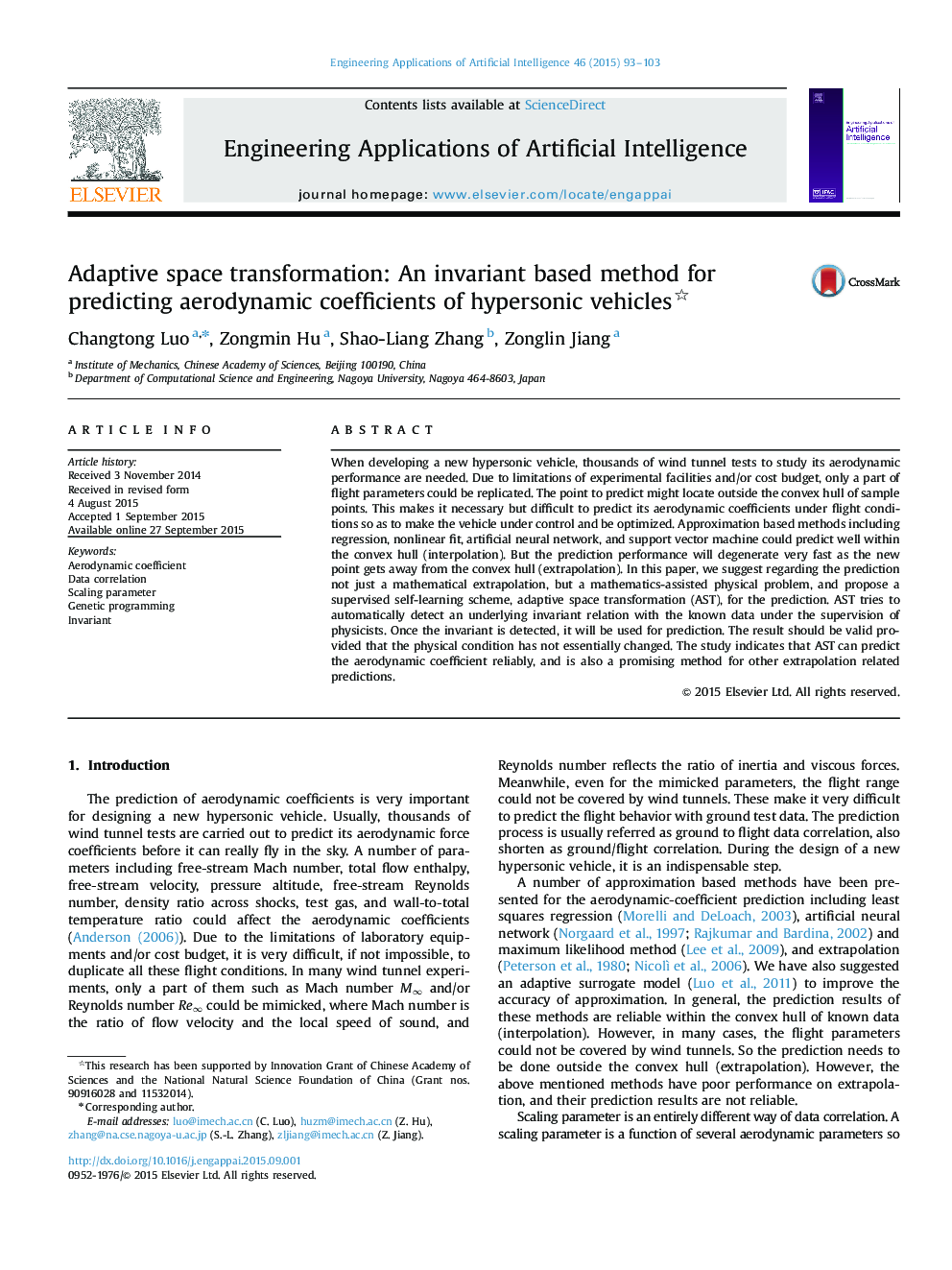| Article ID | Journal | Published Year | Pages | File Type |
|---|---|---|---|---|
| 380263 | Engineering Applications of Artificial Intelligence | 2015 | 11 Pages |
When developing a new hypersonic vehicle, thousands of wind tunnel tests to study its aerodynamic performance are needed. Due to limitations of experimental facilities and/or cost budget, only a part of flight parameters could be replicated. The point to predict might locate outside the convex hull of sample points. This makes it necessary but difficult to predict its aerodynamic coefficients under flight conditions so as to make the vehicle under control and be optimized. Approximation based methods including regression, nonlinear fit, artificial neural network, and support vector machine could predict well within the convex hull (interpolation). But the prediction performance will degenerate very fast as the new point gets away from the convex hull (extrapolation). In this paper, we suggest regarding the prediction not just a mathematical extrapolation, but a mathematics-assisted physical problem, and propose a supervised self-learning scheme, adaptive space transformation (AST), for the prediction. AST tries to automatically detect an underlying invariant relation with the known data under the supervision of physicists. Once the invariant is detected, it will be used for prediction. The result should be valid provided that the physical condition has not essentially changed. The study indicates that AST can predict the aerodynamic coefficient reliably, and is also a promising method for other extrapolation related predictions.
